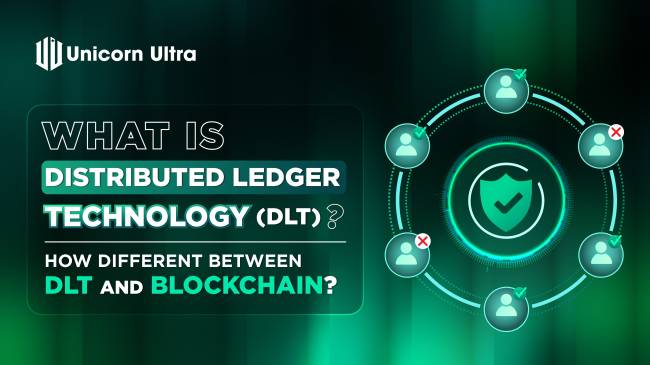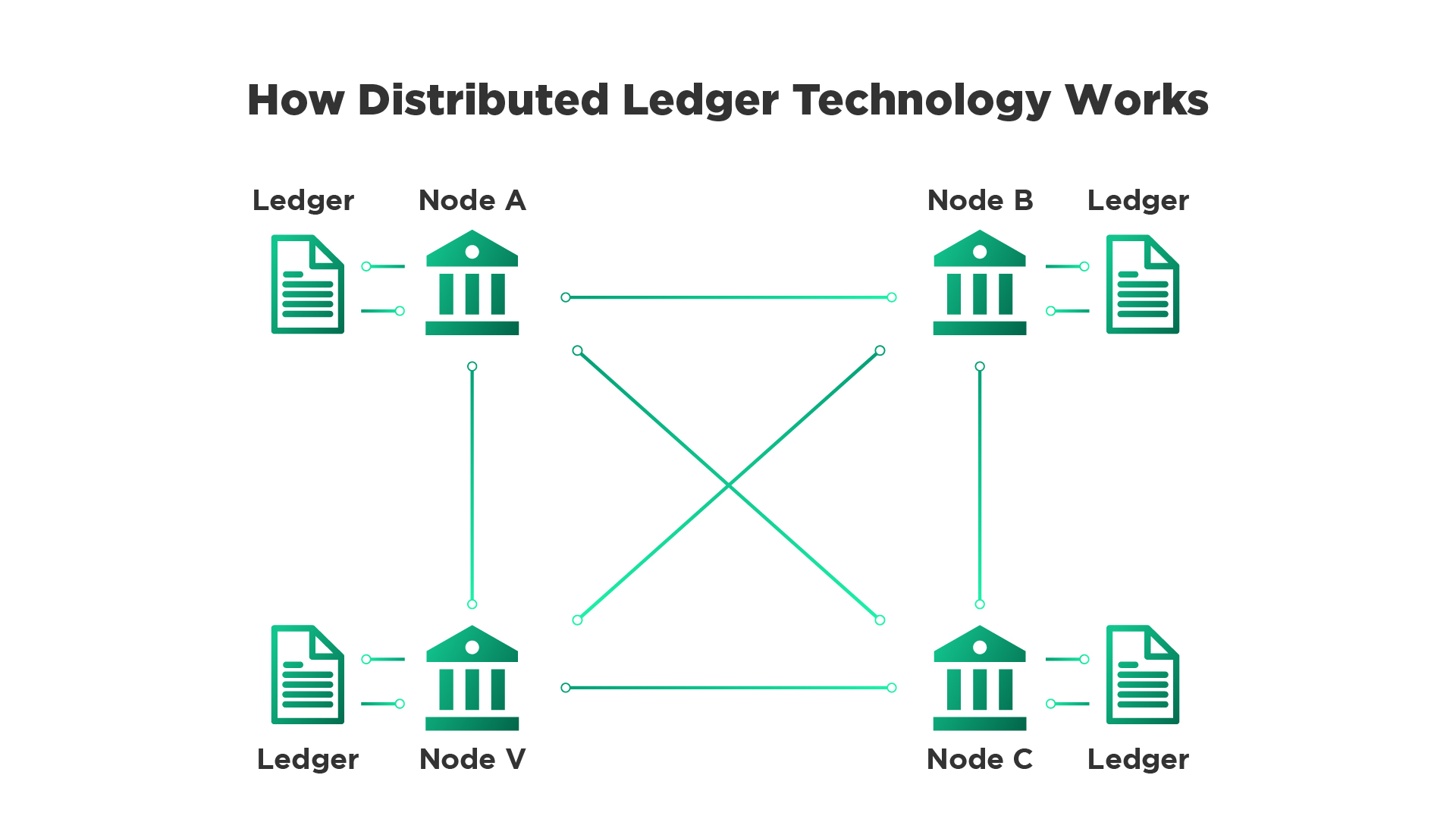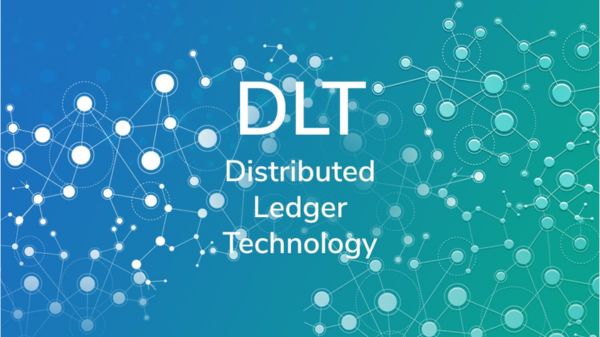Categories: General Information
What is Distributed Ledger Technology (DLT)? How different between DLT and Blockchain?
While often used interchangeably, but some subtle differences with Blockchain make it hard for some people to grasp exactly what is Distributed Ledger Technology.
Through these past years, Blockchain has often been defined as associated with the term Distributed Ledger Technology or DLT. Actually, Blockchain is just a use case that is contained in a broader concept of DLT. This article will clarify the scope of what is Distributed Ledger Technology in a comparative relationship with its derivative application i.e. Blockchain.
Table of Contents
- What is Distributed Ledger Technology (DLT)?
- How does the Distributed Ledger Technology work?
- What does Distributed Ledger Technology use for?
- What are the pros and cons of Distributed Ledger Technology?
- Why is Distributed Ledger Technology important?
- How different between DLT and Blockchain?
- The Future of Distributed Ledger Technology
What is Distributed Ledger Technology (DLT)?
What is Distributed Ledger Technology? Along with Writing, Paper is one of the ancient inventions of humanity. For thousands of years, paper-based use cases remained the backbone to help structure our society: money, bills, books and novels, certificates, and of course, the use of bookkeeping.
However, the reign of paper has now given way to digital technologies based on computing power. The booming of technology, and breakthroughs in cryptography, along with the discovery and use of some new and interesting algorithms, have allowed the creation of distributed ledgers.
In the simplest form, Distributed Ledger Technology or DLT refers to a technological infrastructure that uses a network of independent computers - called nodes - to record, share, and synchronize transactions into a ledger in a digital environment.
The unique characteristic of DLT is its database is not centralized storage and is controlled by a central authority. Instead, the database is encrypted and distributed to each node in a network afterward. In other words, every single node on the network processes every transaction, coming to its own conclusions and then voting on those conclusions to make certain the majority agrees with the conclusions.
This process lays the basis for the consensus algorithm concept. Each distributed ledger is only updated once all nodes have a consensus, and each maintains its own identical copy of the ledger. This architecture allows for a new dexterity as a system of record that goes beyond being a simple database.

How does the Distributed Ledger Technology work?
Distributed ledgers are held, reorganized, and controlled by individual nodes, each node builds the database independently. Every transaction occurring on the network is processed, and a conclusion on the development of the database is created by each node.
When a transaction is performed, its information will be distributed to all nodes for analysis and processing. To reach a consensus, all nodes participate in the voting, and if at least 51% of them agree, the new transaction is accepted on the database. Then, the nodes update the database versions so that all the devices or nodes will be of the same version. The new transaction is written onto a block on the DLT.
Database stored on DLT will be encrypted using cryptography, thereby ensuring that only those with the right to participate can use the data. The term "cryptography" also explains why digital currencies (in the blockchain) are "cryptocurrency."
DLT is programmed so that if only one information cannot be changed, the entire database becomes immutable. Governance within the rules-based network of nodes creates a transparent and democratic environment. Along with it is its distributed, private, and encrypted nature, making it less susceptible to hacker attacks. All backups in the network are highly secured, with strict setup rules, so if criminals want to break into the ledger, they need to attack the entire ledger network simultaneously. This is considered an extremely difficult and impossible task.

What does Distributed Ledger Technology use for?
1. Finance
The potential of DLT underscores its revolutionary role for the entire financial sector. When traditional payment systems such as VISA and SWIFT reveal some limitations, the way DLT works becomes a bright solution. Financial transactions can be done everywhere faster and cheaper, especially in places with poor infrastructure and difficulty accessing the traditional banking system.
2. Verify identity
The advantages of DLT - such as immutability, encryption, and security - make it an ideal solution used to identify each individual digitally. Identity verification using DLT helps prevent identity theft and data theft.
3. Vote
DLT has the potential to be applied to create a secure, transparent voting system, prevent fraud during the voting process, as well as ensure the integrity of this process. Information recorded in an open, transparent, immutable ledger will be stored simultaneously. This helps improve the fairness and reliability of the process of collecting votes/opinions from many different people.
4. Prove ownership
Similar to identity verification applications, DLT can also be used to record property transactions, creating a transparent, immutable record of ownership and transfer of assets.
Although there are still certain limitations when transferring ownership of real physical assets to a distributed ledger, this type of ledger can still convey an immutable source of information about property ownership.
What are the pros and cons of Distributed Ledger Technology?
Advantage of DLT
- Secure, tamper-proof, and immutable: In DLT, the entries happen in the database without third-party involvement. After records are written into distributed ledgers, they cannot be altered by any other party. Hence, until the ledgers are distributed, the records cannot be tampered with.
- Third-party is eliminated: In the supply chain business, results can be written directly without needing a third party. It saves a considerable amount of money, effort, and time.
- Enhance decentralized: The inherently decentralized nature of DLT now adds another layer of security. As the database is spread globally, it is difficult to attack.
- Highly transparent: DLT presents a high level of transparency. They allow all the stored information to be freely and easily viewable. It provides a significant amount of transparency desired by many industries.
Disadvantage of DLT
- Inefficiency: When a network of DLT is congested, processing can be slow, and a transaction may require more fees.
- Energy: The way DLT works requires nodes to process at the same time, meaning computers must operate simultaneously. Therefore, it consumes energy - such as electricity - in extremely large amounts.
- Can't be reversible: Since DLT is immutable, transactions aren't reversible, which can be good or bad. The recipient of a payment doesn't need to worry about the sender performing a chargeback like they can with other payment methods. But this also means the sender has no recourse in the event of fraud.
- A 51% attack: This risk refers to bad actors controlling at least 51% of the network and being able to manipulate it. With the largest cryptocurrencies, it's practically impossible. Smaller networks, on the other hand, could be more at risk.

Why is Distributed Ledger Technology important?
DLT can make the finance sector more resilient, efficient, and reliable. The technology can be used to improve features of the finance sector, such as processing transactions without third-party involvement and cross-border payments.
DLT holds many benefits over more traditional centralized ledger systems. Because DLT is a decentralized system, there is no central point of control or failure. This makes DLT more resilient to attacks and less vulnerable to system-wide failures.
DLT can be classified as either public or private, depending on the accessibility of the ledgers by anyone or by the devices (also called nodes). It can also be categorized as permissioned or permissionless, based on whether participants require permission from a certain entity to edit the ledgers.
How different between DLT and Blockchain?
As posed in the beginning, while often considered homogeneous, DLT and Blockchain are distinct – though subtly different – technologies.
A distributed ledger is a record of consensus with a cryptographic audit trail which is maintained and validated by several separate nodes. This cryptographically assured and synchronized data can be spread across multiple institutions. Distributed ledgers can be either decentralized, granting equal rights within the protocol to all participants, or centralized, designating certain users' particular rights. Actors typically employ distributed ledgers when they need a tool that permits concurrent editing of a shared state while maintaining its unicity. The ledger’s state is determined through a consensus algorithm, which can vary in its mechanics but ultimately serves to validate information from inputs to the network.
A Blockchain data structure has a shared, replicated ledger comprised of digitally recorded and unchangeable data in packages called "blocks." A blockchain sits below a distributed ledger and acts as a way to order and validate the transactions in the ledger. While a blockchain automatically produces a new “block” after certain predetermined criteria are met, a distributed ledger only verifies a transaction once it is submitted instead of pushing out empty blocks.
In short, a distributed ledger is a record of consensus with a cryptographic audit trail maintained and validated by nodes. It can be decentralized or centralized. Blockchain is a way to implement a Distributed Ledger, but not all Distributed Ledgers necessarily employ blockchains.
The Future of Distributed Ledger Technology
The invention of distributed ledgers represents a revolution in how information is gathered and communicated. It applies to both static data (a registry) and dynamic data (transactions). Distributed Ledger Technology allows users to move beyond the simple custodianship of a database and divert energy to how we use, manipulate, and extract value from databases.
Right now and in the future, Distributed Ledger Technology is transforming the digital world by allowing organizations to securely store, transfer, and manage data in a distributed, decentralized, and secure manner. It also could reshape capital markets. From securities issuance to settlement, trading, and servicing, DLT creates benefits that include faster processing, more transparency, lower costs, and reduced risks.
Moreover, this era is witnessing Bitcoin and other cryptocurrencies have more adoption, leading humanity into an era where digital technology drives every movement of sociality. The potential of DLT and its power even beyond cryptocurrency; therefore, looking forward, DLT owns a bright future as long as developers constantly explore and upgrade it.
Conclusion
The insight about what is Distributed Ledger Technology may not have been provided more thoroughly in this article. However, this article has outlined the most basic scope of the concept of DLT, through which viewers can grasp the essence of this promising technology. Follow U2U for more blockchain information.
